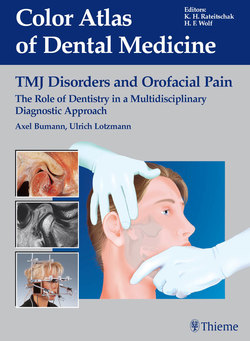Читать книгу TMJ Disorders and Orofacial Pain - Axel Bumann - Страница 6
На сайте Литреса книга снята с продажи.
ОглавлениеForeword
The authors of this extraordinary atlas have given the dental profession an extremely comprehensive and well-organized treatise on the functional diagnosis and management of the masticatory system. Historically, dental literature in the field of occlusion has been primarily based on clinical observations, case reports and testimonials. This extremely well referenced atlas is a welcome addition to the momentum within the dental profession to move the field forward to a more evidenced-based discipline. The multidisciplinary diagnostic approach presented in the atlas is well established and supported by published data. Chapters include up-to-date information and exquisite photography on the anatomy, physiology, pathology and biomechanics of masticatory system, as well as detailed diagnostic techniques. The theme of the atlas is based on the importance of the coordinated functional interaction between the tissue populations of the various stomatognathic structures. The authors emphasize the need for thorough functional analyses in order to accurately determine if the dynamic physiologic relationship between the various tissue systems is functional or dysfunctional. As so beautifully illustrated in the text, when there is a disturbance in this dynamic functional equilibrium due to injury, disease, adverse functional demands or a loss in the adaptive capacity of the tissues, tissue failure and functional disturbances can occur. The authors present precise and very comprehensive clinical functional analysis techniques for establishing specific diagnoses, and ultimately, improved treatment planning. Multidisciplinary treatment planning based on the data derived from diagnostic functional analyses including established orthopedic techniques, intraoral examinations, imaging and instrumented testing systems is expertly explained in easy to follow steps. The emphasis throughout the atlas is that diagnostic-driven treatment is based on the specific needs of the individual patient rather than based on a preconceived belief system or on a stereotyped concept thought to universally ideal. Treatment plans are based on cause-oriented functional disturbances that may need to be modified by the patient’s compliance, general health and emotional status in addition to the clinician’s abilities, training and experience. 1 congratulate Drs. Alex Bumann and Ulrich Lotzmann for their outstanding efforts in providing the profession with an extremely well organized, skillfully written, and beautifully illustrated atlas. I especially appreciated their attempt to provide the reader with, wherever possible, current and complete references and, thus, add important evidenced-based literature to the field. This treatise on functional disturbances of the stomatognathic system should be required reading for anyone interested in the diagnostic process and treatment planning in dentistry in general. Additionally, the detailed chapters describing the various diagnostic functional techniques with accompanying exquisite illustrations make this an outstanding comprehensive teaching atlas in occlusion for students and clinicians.
Charles McNeill, D.D.S.
Professor of Clinical Dentistry & Director,
Center for Orofacial Pain
School of Dentistry, University of California. San Francisco
